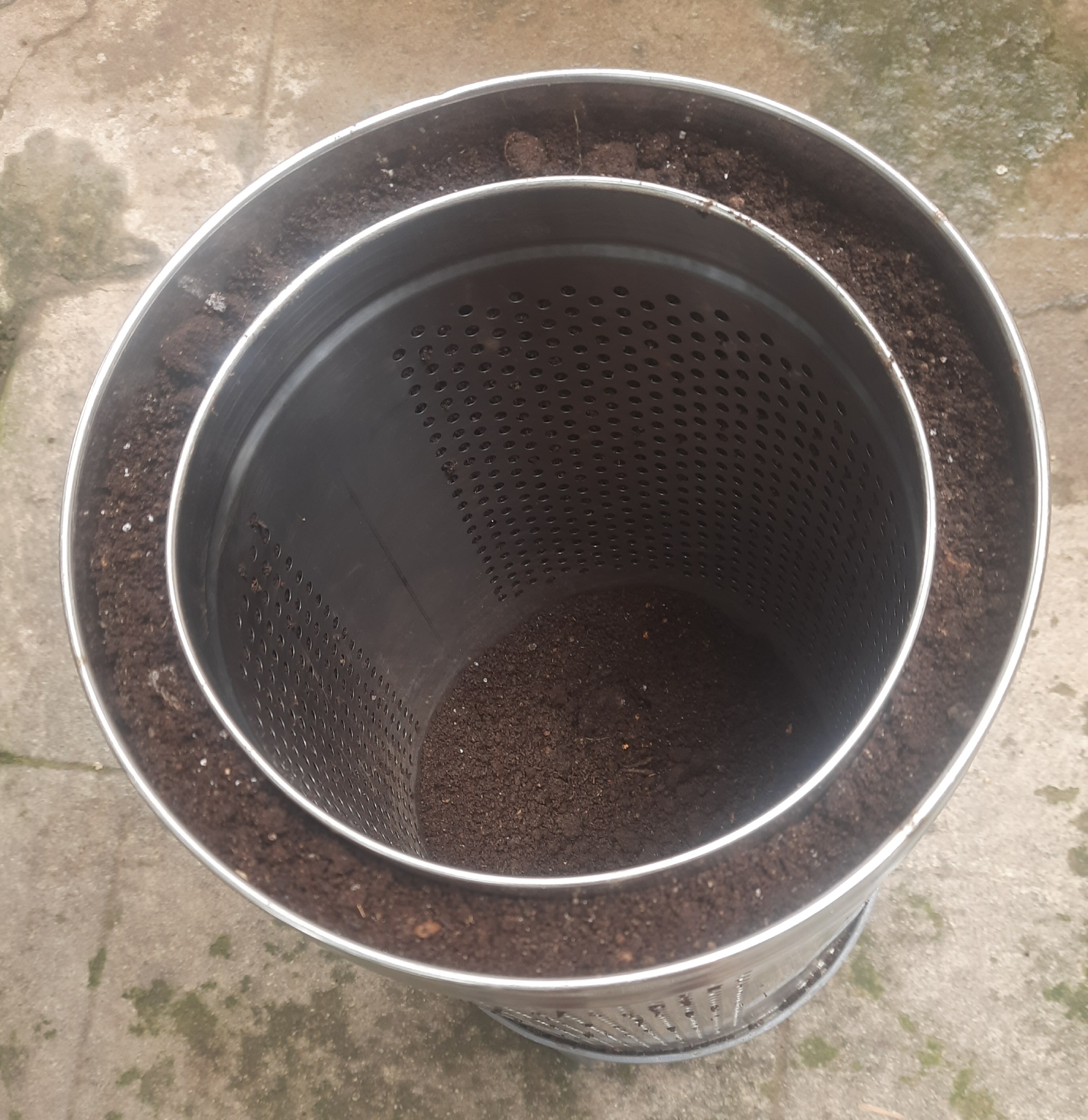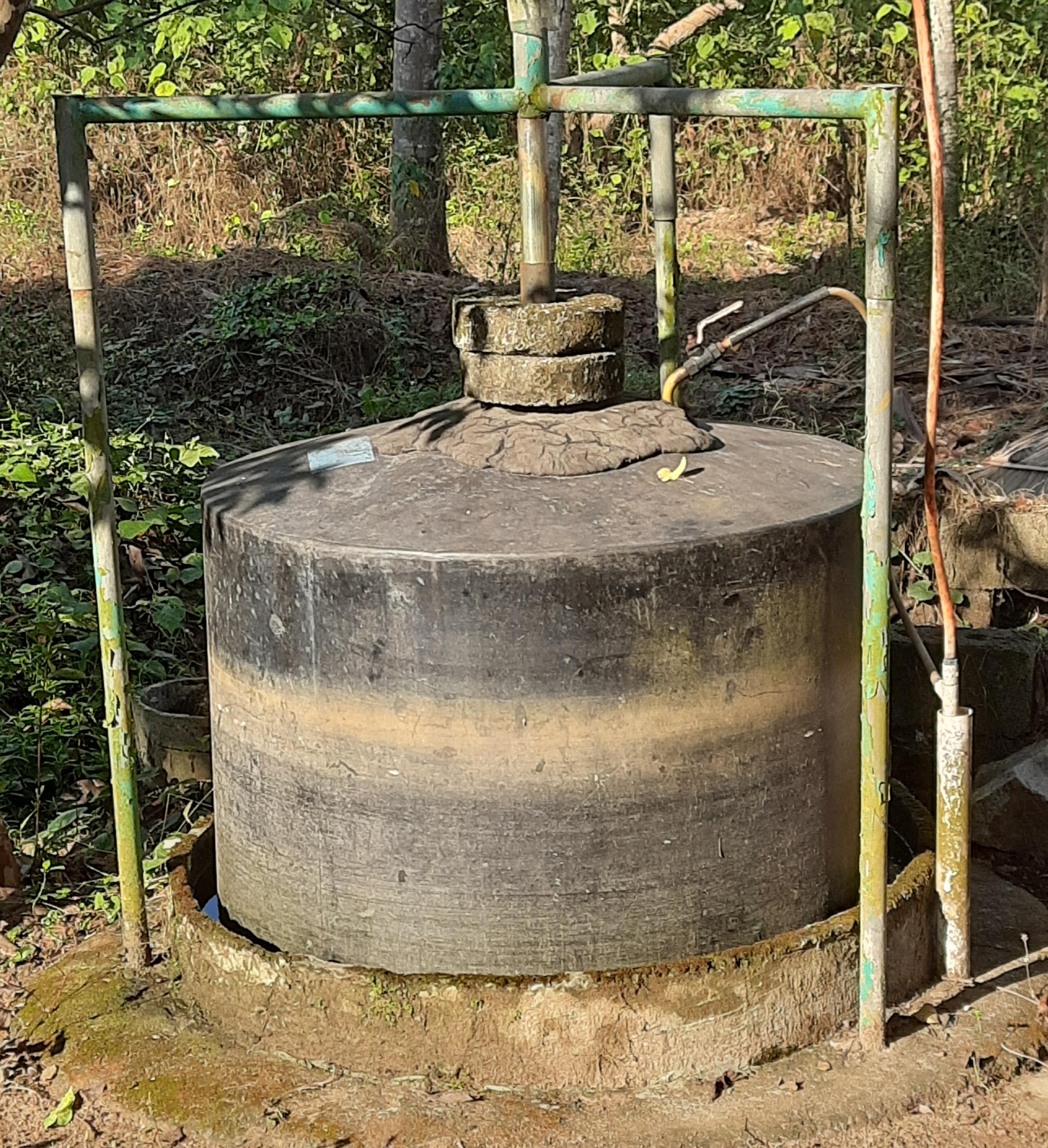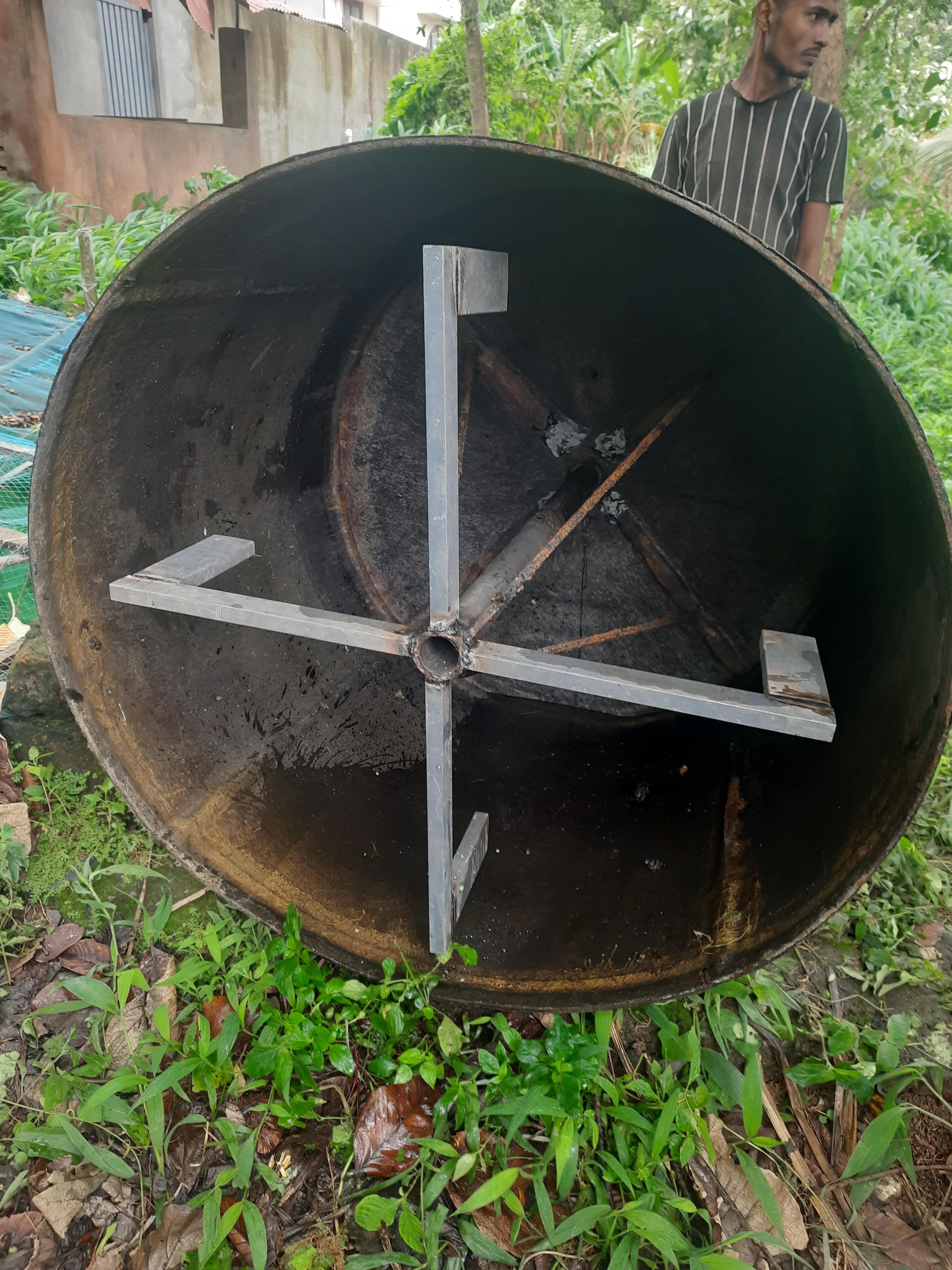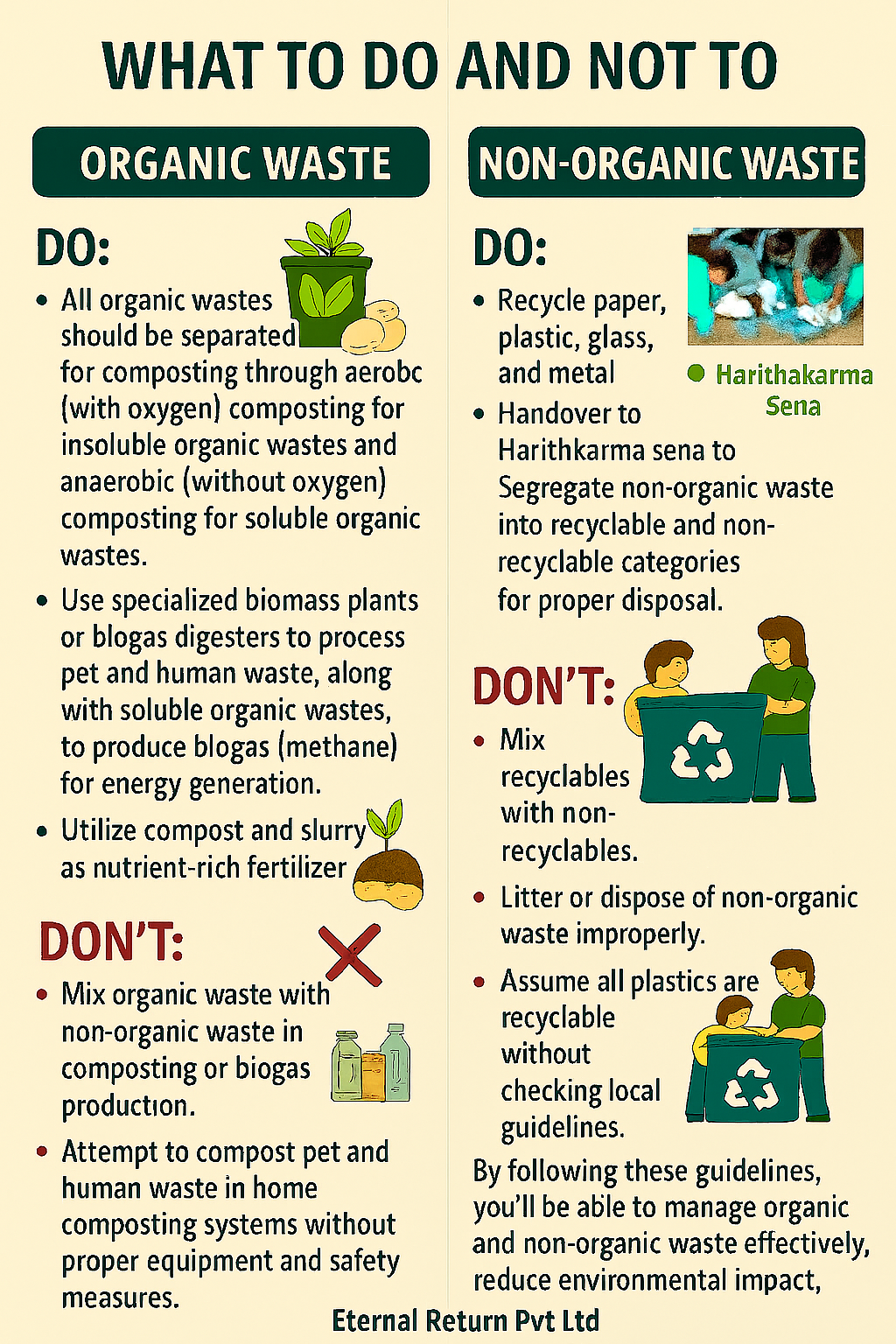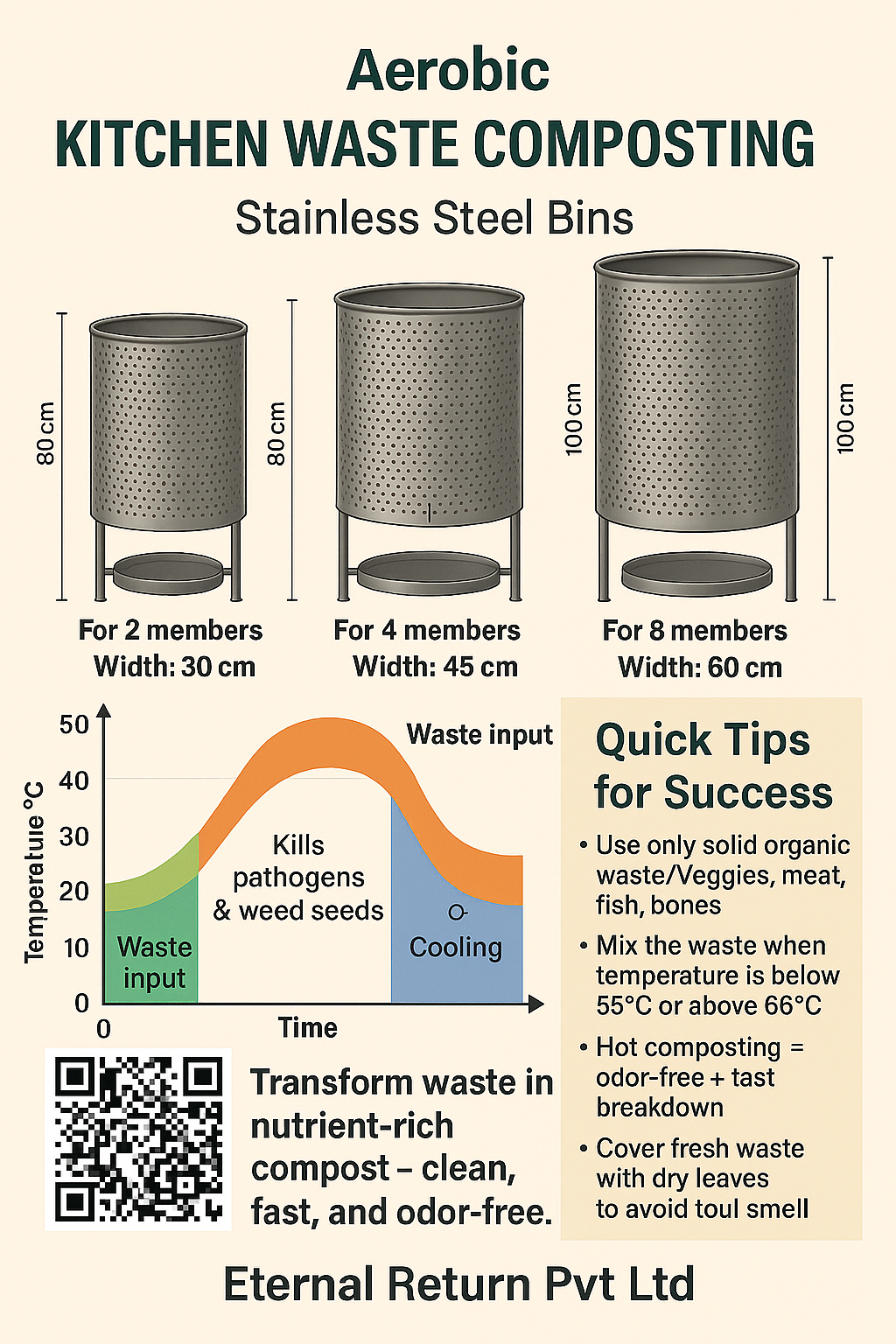
Various types of organic waste management
What to do and not to are very important on waste management.
Wings inside biogas plant will dilute sludge deposit by giving water and rotation.
While biogas plants don't typically absorb oxygen into the sludge, they do utilize oxygen in a specific process to remove hydrogen sulfide. Oxygen is introduced into the digester (where biogas is produced) to react with hydrogen sulfide, converting it to elemental sulfur, which can then be removed. This is done to prevent corrosion and other issues caused by hydrogen sulfide in the biogas.
Here's a more detailed explanation:
Biogas Production:
Biogas is produced through anaerobic digestion, a process where microorganisms break down organic matter in the absence of oxygen.
Hydrogen Sulfide (H2S):
A common component of biogas, H2S is undesirable due to its corrosive nature and potential to cause damage to equipment.
Microaeration (Oxygen Dosing):
To remove H2S, a small amount of oxygen is introduced into the digester (microaeration or oxygen dosing).
Chemical Reaction:
The oxygen reacts with H2S, primarily through microbial action, converting it to elemental sulfur and water.
Sulfur Removal:
The elemental sulfur can accumulate within the digester and may re-enter the liquid sludge or be flushed out with the slurry.
Benefits:
This process helps to purify the biogas, making it suitable for various applications like power generation or upgrading to biomethane.
Mini model aerobic Kitchen Waste bin for in soluble organic wastes.
I've designed an aerobic mini compost bin consisting of two cylinders with the following dimensions: 36 cm in height, an inner ring with a 20 cm diameter, and an outer ring with a 24.5 cm diameter. The bin features holes around the body and at the bottom for aeration. The space between the cylinders is filled with powdered cow dung, and additional cow dung is placed at the bottom to facilitate oxygen input.
The composting process involves layering materials from bottom to top: microbial-mixed wet powdered cow dung, carbon-rich materials like dry leaves or wet/dry kitchen waste, and additional carbon-rich materials. A microbial culture mixed with powdered cow dung is added on top to control foul odors.
Within 5 days, the internal temperature of the compost bin increases, causing vapors to rise and creating a suction effect that draws oxygen from the sides and bottom. This process kickstarts the composting process.
My composting journey began with limited knowledge, but I've been experimenting and learning from my experiences.
